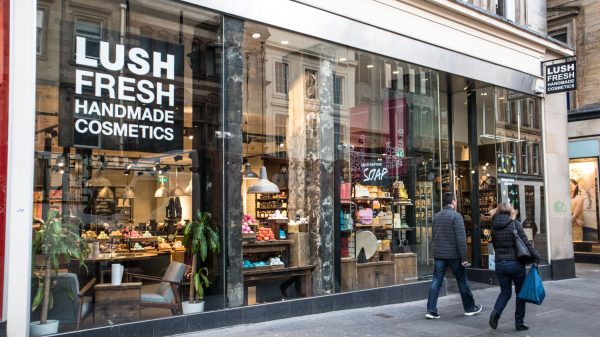“One of Amazon’s key motivations and ambitions is to try to gain a much better understanding of how the physical and digital worlds interact,” Retail Economics’ CEO Richard Lim told The Guardian in October last year, when the first Amazon 4-star branch opened in the UK.
“They understand how the digital world works but they don’t have much visibility over the physical world.”
That was just five months ago, and already the ecommerce giant has announced that it is permanently closing all of its 4-star, books and pop-up stores, a total of 68 locations across the US and UK.
“We’ve decided to close our Amazon 4-star, Books, and Pop Up stores, and focus more on our Amazon Fresh, Whole Foods Market, Amazon Go, and Amazon Style stores and our Just Walk Out technology,” the company said in a statement.
Amazon is certainly not afraid to dabble in new territory, having successfully branched out into multiple markets, from healthcare and grocery to drone delivery. So why did these stores fail?
The retailer, which first started as an online bookseller, launched its first physical bookstore in Seattle in 2015.
After this initial launch, Amazon steadily expanded its bricks-and-mortar footprint to include more bookstores, its Amazon 4-star brand – which features a selection of the site’s best rated products – and Amazon Pop Up shops, selling a mix of electronics and general items.
However, the retailer has now made a U-turn, announcing it is shuttering all of its Amazon Books, 4 star and Pop Up stores as a result of unexpectedly slow sales growth.
Amazon would not reveal how many employees would be affected by the closures but said it will assist people in finding other job roles in the company, or severance packages for those who choose to leave Amazon.
The retail locations offered lower prices and perks to Amazon Prime subscribers, as well as serving as a physical contact point to return items.
They also presented the opportunity to strengthen and solidify Amazon’s brand identity, giving customers the ability to browse best sellers and making its name more visible on the high street.
So why did the company decide to pull the plug?
Disappointing sales
Amazon’s physical stores reported lower overall sales in 2021 than in 2018.
Physical sales represented a mere 3% of Amazon’s total of $137 billion earnings in the last quarter. This small percentage largely came from the company’s Whole Foods subsidiary, which will remain in operation alongside its cashierless grocery stores.
These figures demonstrates that sales growth from Amazon’s stores has simply failed to keep pace with the exponential growth in other areas of the business.
In addition, Amazon’s vice president of physical retail Cameron Janes – who was spearheading the launches – left the business abruptly in November.
Neil Saunders, managing director of research firm GlobalData said that, despite Amazon being no stranger to trying new concepts, it will quickly abandon ventures that are not profitable in the long-term.
“While it is unusual for most retailers to abandon concepts in a wholesale fashion – especially outside of bankruptcy – Amazon is not a typical retailer,” he said.
“It tries and tests new things, often committing reasonable levels of investment, only to move on if it doesn’t see forward potential.”
Prioritising its grocery offering
Amazon has said it is “committed to building great, long-term physical retail experiences and technologies” and its Amazon Fresh stores are at the heart of this commitment.
The company has reportedly developed detailed plans to make its mark on the UK supermarket sector and will open hundreds of cashierless grocery stores across the country in the next three years.
More than 260 Amazon-owned and run supermarkets are to be launched before the end of 2024, namely 60 in 2022, another 100 per year in 2023 and 100 more the year after.
All the new locations will follow the cashierless model, the online retail giant wrote in internal documents, according to a Business Insider report.
The company reportedly wants to “catch up to” Tesco and Sainsbury’s, with a growth rate similar to both supermarkets, as well as The Co-op.
“In 2022, we assume a broader rollout of two store launches per week by the end of [the] year, targeting 60 total openings,” the internal document states.
“In 2023 and 2024, we are planning 100 store launches per year, in line with more aggressive opening programmes achieved by convenience stores in the UK in the last five years, Tesco’s, Sainsbury’s and Co-op have all exceeded 100 openings per year.”
Amazon has evidently recognised that its checkout-free grocery stores are a better long-term investment.
The company no longer needs to attract new prime members
RJ Hottovy, Placer.ai’s head of analytical research, told Business Insider that Amazon’s physical stores were designed to encourage more people to sign up to Amazon Prime.
Amazon’s book stores, 4-Star locations, and Pop Up shops helped attract new customers to Amazon and its Prime membership, he said.
Amazon’s grocery chains averaged about three times the number of visits per customer as the three banners it’s closing, according to data from Placer.ai.
Therefore, if Amazon has switched its focus from acquiring new Prime users to simply retaining them, the stores no longer serve a strategic purpose.
It was a sentiment echoed by Wedbush Securities analyst Michael Pachter, who said Amazon was right to forgo the niche market of bricks-and-mortar book shoppers “Retail is hard, and they’re discovering that,” he told Reuters.
Click here to sign up to Charged‘s free daily email newsletter










